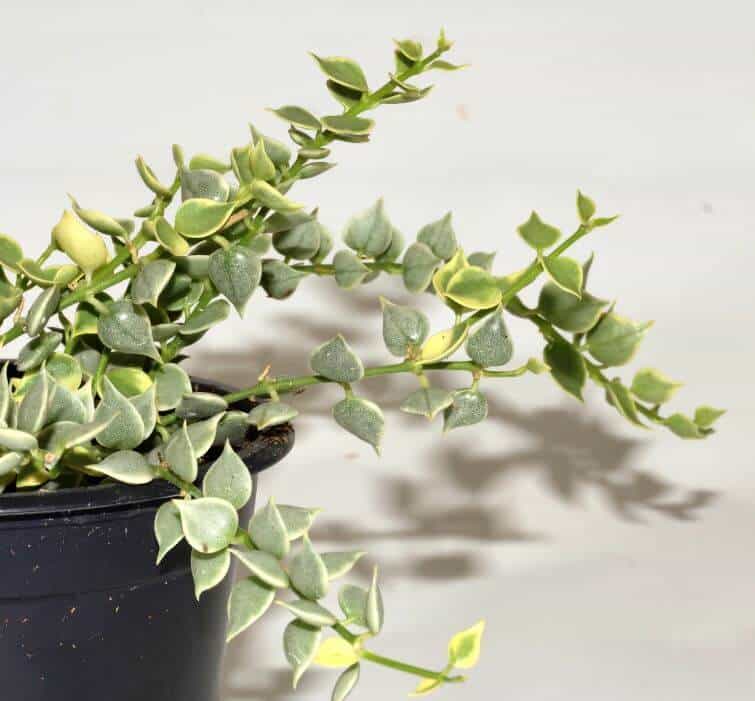Last Updated on January 5, 2023 by a Friendly Gardener
Popularly known as the Million Hearts plant, this delightful vining plant boasts heart-shaped foliage which accounts for its common name. Elegant and refined, leaves are tiny and pale green featuring cream variegation. Edges may be yellow, and some leaves may even appear to be completely pale yellow hence adding to its exotic look.
The Dischidia genus has predominantly epiphytic, succulent vining plants that are members of the Apocynaceae family. They enjoy a close relationship with Hoyas but produce smaller cream-colored or white flowers. Like the Hoya blossoms, blooms can be fragrant. The Variegated Dischidia Ruscifolia is a perennial native to tropical areas of Asia. As succulents, they can be watered less frequently making them ideal houseplants for those with less time to dedicate to plant care.
As an epiphyte, it will grow on trees in its native environment. It can be easily cultivated both indoors and outside and its popularity continues to increase due to its ease of care.
Variegated Dischidia Ruscifolia Plant Care
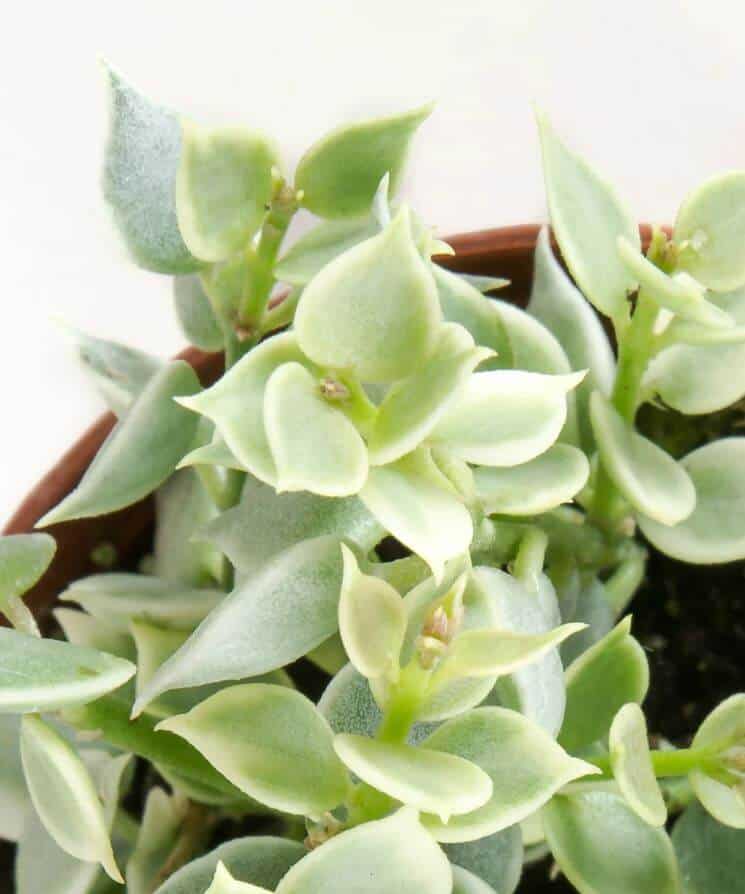
This plant produces a compact growth habit with lilting cordate vines making it the ideal choice for hanging basket cultivation. It can grow to be 18 inches in maturity while branches can reach double that size.
Soil
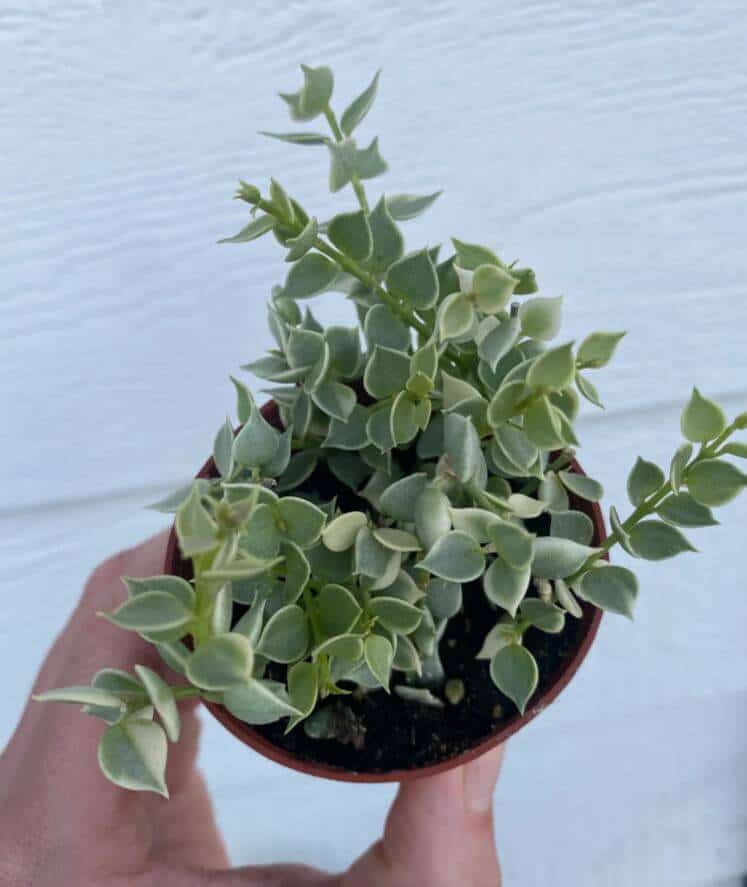
As an epiphyte, this plant does not necessarily need soil for cultivation. Sphagnum moss, coconut coir, or orchid bark are ideal options. It can be planted near a tree outdoors and permitted to exploit its climbing abilities. You can use potting soil as long as it is loose and well-draining. If you opt for soil add some perlite or coarse sand to the soil mix to guarantee drainage. To improve soil acidity, add a sprinkle of chalk to the soil bed near the roots. The soil acidity should be mildly acidic measuring between 6 and 7.5.
Light
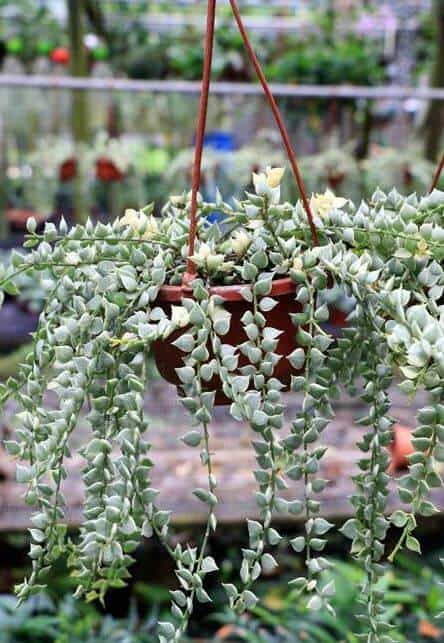
Partial shade or exposition to gentle direct sun will make for a happy plant. It should not be placed in strong sunlight. A spot near a window with bright indirect light is best for indoor cultivation. If the window light becomes harsh in the summer, move your plant a bit further away from the window. If you don’t have much light in your home or office, you can use a grow light.
Water
Less is so much more when you are watering a succulent. As a native tropical climber, it will get most of its required moisture when it rains, so it doesn’t need copious amounts of water. Water it just as it is about to dry out. If you test the soil and it still feels a bit damp, wait another day or two before watering. Should you choose to use orchid bark of sphagnum moss as a growing medium, soak the growing medium in water for approximately 20 minutes and drain after. This will be sufficient until the next watering.
Humidity
The Million Hearts plant loves humidity just like it would find in the native tropical forests in Asia. The humidity level should be a minimum of 40%. Steamy bathrooms and kitchens are good locations, or you can opt for a space humidifier or pebble tray if you are not hanging it. Another method for increasing local humidity is by grouping plants together. Mutual transpiration will create a microclimate.
Temperature
The Million Hearts plant needs an environmental temperature in the 40° to 80° F range. This plant will withstand the heat, should temperatures rise higher thanks to its succulent nature. It is also relatively cold tolerant although the plant won’t like it. With temperature drops, never place it directly in front of a heating vent, but in the vicinity to improve the climate.
Feeding
In its natural habitat, the million Hearts plant will assume nutrients from plant debris falling from above. If you are cultivating indoors, occasional feeding is a good idea. Use a basic NPK 20-20-20 liquid fertilizer diluted to half-strength or an NPK 9-9-9 fertilizer monthly during the growing season. Do not feed your plan during dormancy.
Pruning
Trimming back this plant is easy. If stems appear too long or appear as if they are about to fall off, you can trim your plant. Pruning can be done year-round. You should wear gloves when pruning as the sap is an irritant.
Repotting the Variegated Dischidia Ruscifolia Plant

Repotting the Variegated Dischidia Ruscifolia plant can be a challenge. If you decide to use soil watch for roots peeking out of the pot’s drainage holes and repot into a new container about an inch or two larger. If you are using bark or moss, when roots become too apparent, it’s time to repot. Always be gentle when handling root systems during repotting.
Variegated Dischidia Ruscifolia Plant Propagation
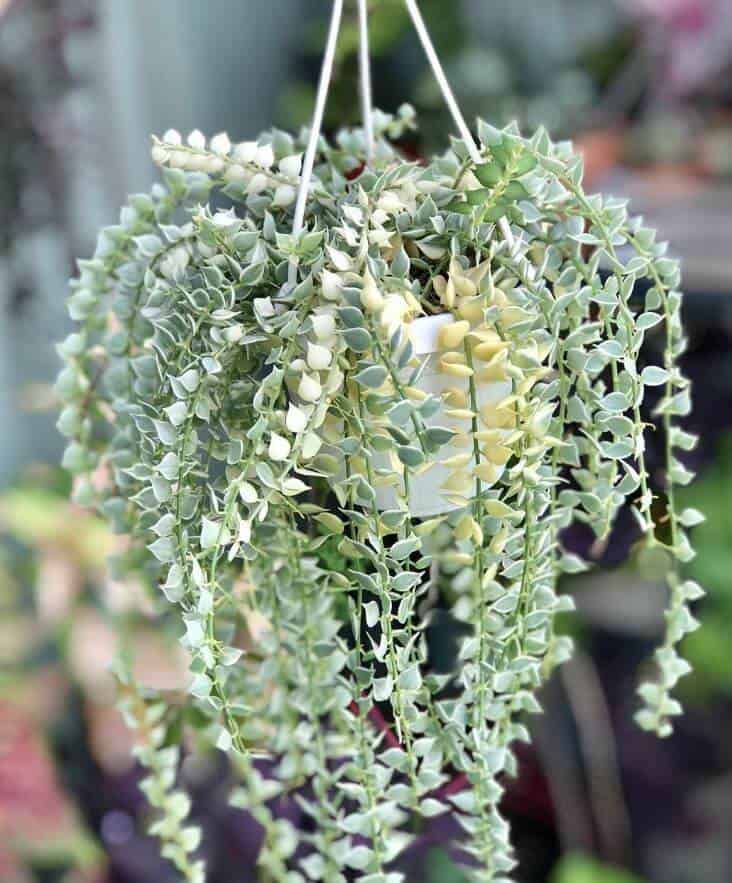
The easiest way to propagate the million hearts plant is through stem cuttings. When pruning, cut in a diagonal line and then use the stem segments for propagation. You can dip the cut end in rooting hormone before inserting it into a growing medium such as soil mix or sphagnum moss. Keep the growing medium moist and place it in a warm location with indirect light until roots form.
Potential Problems for the Dischidia Ruscifolia Million Hearts Variegated
The Million Hearts plant is susceptible to the same diseases and pests as many houseplants Common pests include aphids and mealybugs which can be treated with insecticidal soap.
Typical diseases are botrytis rot and rust, which are both fungal infections. For fungal infections, remove infected parts and treat your plant with a fungicide. Neem oil is a safe, organic fungicide.
Yellow foliage is generally the first sign that your plat is experiencing a problem. This may be due to under or overwatering. If your plant is suffering, check the soil bed to ascertain if it needs to be replaced with a fresh growing medium.
Variegated Dischidia Ruscifolia Plant Toxicity
Unfortunately, this lovely creature is toxic to both family pets and humans. The sap found in leaves and stems causes burns whether touched or ingested. Flowers are also toxic as well. For humans, the principal risk is to the skin when touched during pruning. This leaves patches that resemble eczema on the skin’s surface. Rinse the area with lots of water. For family pets, ask a vet for advice. Ingestion by fur babies can result in diarrhea, vomiting, and burns.

